|
CONTENTS
MVP by One Vote
Yankee Stadium Facts
Egghead Players
1954 Tidbits
Harry Frazee, Red Sox Killer
1-2-3 Teammates
Milwaukee Back in the Majors
Double-Digit Comebacks
Baseball Bonuses
Draft Duds
Baseball
Did You Know – I
Baseball
Did You Know – II
Baseball
Did You Know – III
Baseball
Did You Know – IV
Baseball
Did You Know – VI
Baseball
Did You Know – VII
Baseball
Magazine
Top
of Page |
Baseball
Did You Know? –V
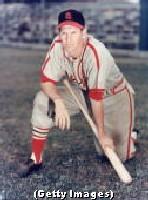
Marty Marion
|
The closest MVP voting that did not end in a tie occurred in 1944 in the National League. Marty Marion, SS of the pennant-winning St. Louis Cardinals, edged Bill Nicholson, slugging OF of the fourth place Chicago Cubs, by one point.
- "Slats" Marion hit only .267, the lowest batting average ever for an MVP. He had only 6 HRs and 63 RBI. He excelled in the field as his 6'2" frame covered ground effortlessly.
- 6' 205 lb "Swish" Nicholson led the NL in HRs with 33 and in RBI with 122 and batted .287.
The lowest batting average for an AL MVP was Roger Maris's .269 in 1961, the year he broke Ruth's record with 61 HRs.
|
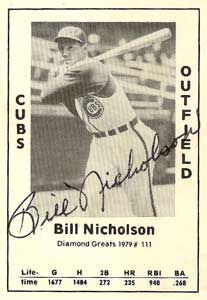 |
|
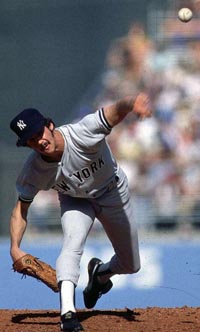
Ron Guidry
|
With the closing of the original Yankee Stadium in September 2008, here are some facts about The House That Ruth Built.
- Most strikeouts in a game at the Stadium: 18 by Ron Guidry against the Angels, June 17, 1978
- Most hits in a 9-inning game: 30 by the Yankees against the Red Sox, September 28, 1923
- Longest game in innings: 20 as the Yankees beat the Red Sox 4-3, August 29, 1967
- Most runs in a game by a team: 22 by the Yankees against the White Sox (22-5) on July 26, 1931 and by Cleveland against the Yankees (22-0) August 31, 2004
- Number of times players hit back-to-back inside-the-park HRs: 1 by Toby Harrah and Bump Wills of the Texas Rangers, August 27, 1977
Reference: New York Times, September 21, 2008
|
|
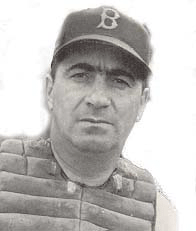
Moe Berg
|
Some ML players were particularly well-educated.
- C Moe Berg graduated magna cum laude from Princeton. Moe played for five different ML teams from 1923-1939, compiling a .243 batting average. P Ted Lyons joked about Berg: "He can speak ten languages and can't hit in any of them."
- One of the early stars, John Montgomery Ward, attended Penn State and received a law degree from Columbia. He founded the first players' union, the Brotherhood, in 1885. His HOF career spanned 1878-1894.
- While Bobby Brown played 3B for the Yankees from 1946-1954, he earned an MD from Tulane after previous degrees from Stanford and UCLA. He then practiced cardiology until he served as AL president from 1984-1994.
Reference: Baseball's Most Wanted, Floyd Conner
|
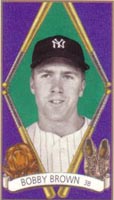 |
|
My brother recently gave me a soggy, frayed copy of the 1955 Sporting News Dope Book that had been handed down in the family. Here are some interesting tidbits from the 1954 season listed in it.
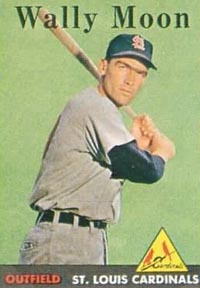
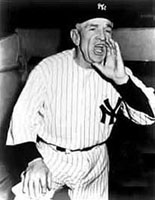
Casey Stengel
|
- Wally Moon, rookie OF for the St. Louis Cardinals, joined a select group of players by hitting a HR in his ML debut, April 13, 1954. He tagged southpaw Paul Minner of the Chicago Cubs in the first inning at Busch Stadium. Moon also ended his inaugural season the way he started it, with a HR in his last AB. Wally was voted NL Rookie of the Year for hitting .304 with 12 HR and 76 RBI for Eddie Stanky's 6th-place Redbirds.
- RHP Russ Meyer began his ML career with the Cubs in 1946. Since being sold to the Phillies in October 1948, Russ made a habit of beating his former team regularly. His six victories over the Windy City Northsiders for the Brooklyn Dodgers in 1954 gave him a string of 16 straight victories over his former club and a lifetime mark of 21-2 against Chicago.
- The New York Yankees used more pinch-hitters than any club in AL history in 1954 as Casey Stengel juggled his lineup constantly in a desperate attempt to overhaul the pennant-bound Cleveland Indians. Stengel called on a total of 262 substitute swingers, and they hung up a nifty .292 average while driving in the winning runs in a dozen games.
- While the Yanks compiled the best pinch-hitting mark for a team, the two best emergency swingers were a pair of NLers.
- Dusty Rhodes of the New York Giants, who gained fame for his pinch-hitting feats in the 1954 World Series sweep of the Indians, batted .326 (15-40) during the regular season. Among his safeties were two HRs, a triple, and a double, and he personally accounted for four victories and tied three other games with his emergency clouts.
- The Cardinals' Joe Frazier led the majors in pinch hits with 20 while posting a .323 average.
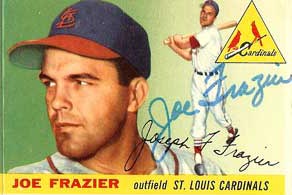
|
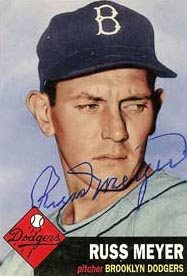
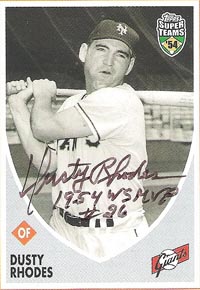
|
|
Harry Frazee, Red Sox Killer
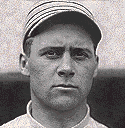
Wally Schang
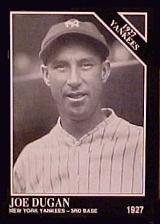
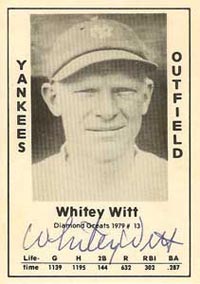
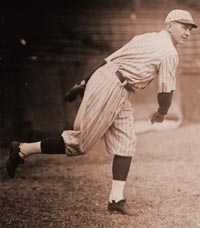
Bob Shawkey
|
The name "Harry Frazee" to this day conjures up anger among Boston Red Sox fans. He is the owner who sold Babe Ruth to the Yankees in December 1919 for an unheard-of $100,000. But the wounds Frazee inflicted on the Boston franchise went even deeper.
Consider the lineup the New York Yankees fielded in 1923 when they won their first World Series.
- C Wally Schang – traded from Red Sox December 1920
- 1B Wally Pipp– purchased from Tigers February 1915
- 2B Aaron Ward – signed by Yankees originally
- 3B Joe Dugan – traded from Red Sox July 1922
- SS Everett Scott – traded from Red Sox December 1921
- OF Babe Ruth – purchased from Red Sox December 1919
- OF Whitey Witt – purchased from Athletics April 1922
- OF Bob Meusel – signed by Yankees originally
- SP Bob Shawkey – purchased from Athletics June 1915
- SP Joe Bush – traded from Red Sox December 1921
- SP Waite Hoyt – traded from Red Sox December 1920
- SP Sam Jones – traded from Red Sox December 1921
- SP Herb Pennock – traded from Red Sox January 1923
Of the eight regulars and five starting pitchers on the 1923 Yankees, only two had played their entire MLB career with New York. Two others came from the A's and one from the Tigers.
- Four of the eight regulars were obtained from the Red Sox by purchase or trade.
- Four of the five starting pitchers came from Boston.
From 1903 through 1918, the Red Sox won five World Series. Frazee bought 70% of the team and assumed the mortgage on two-year-old Fenway Park in 1916. Baseball, however, was a sidelight for Frazee. His main profession was a theatrical producer. World War I affected his income from both the baseball and Broadway operations. As a result, he found himself in need of cash to meet his financial obligations after the 1919 baseball season. This led to the sale of Ruth. When he continued to face monetary difficulties in the ensuing seasons, he made trades with the Yankees every year through 1923, when he finally sold the team for $1.15 million.
Here are the baseball results of Frazee's financial management.
- The Yankees won their first AL pennant in 1921 and repeated in 1922. After losing the World Series the first two tries, they won it 1923. After finishing 2nd in 1924 and 7th in 1925 (when Ruth missed most of the season), they won the AL in 1926, 1927, and 1928, copping the World Championship the latter two years. They topped off the Roaring Twenties by finishing 2nd in 1929.
- The depleted Red Sox, previously the premier franchise in baseball, finished last in the AL nine times from 1922-1932.
|
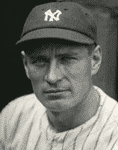
Wally Pipp

Everett Scott
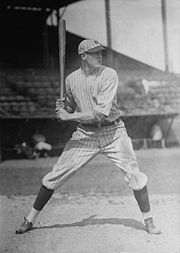
Bob Meusel
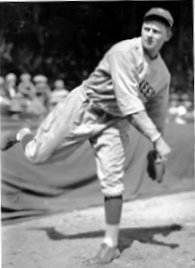
Waite Hoyt
|
|
Milwaukee Back in the Majors
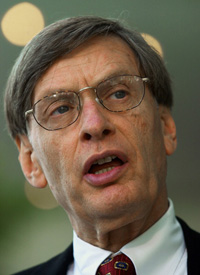
Bud Selig |
On July 24, 1967, the Minnesota Twins and Chicago White Sox played before an overflow crowd of 51,144. What's unusual about that? The contest was an exhibition game played in Milwaukee's County Stadium. The Brew City had lost the Braves to Atlanta after the 1965 season, and the game was billed as a test of Milwaukee's interest in returning to MLB. The attendance was the largest ever for a baseball game in Milwaukee.
The turnout encouraged a group led by automobile dealer Bud Selig, who had owned stock in the Milwaukee Braves, to negotiate a contract with White Sox owner Arthur Allyn to have his team play nine of their home games at County Stadium in 1968. Those contests drew 264,297 or an average of 29,366. As a result, the White Sox played eleven games in Milwaukee in 1969.
Finally, in 1970, MLB returned to Milwaukee full time when Selig and his investors bought the bankrupt Seattle Pilots, renaming them the Brewers. After competing in the AL for 14 years, the Brewers transferred to the NL in 1994 as part of baseball's expansion and reorganization. By that point, Selig was Commissioner of Baseball.
The Brewers are the only franchise to play in four different divisions.
- As the Seattle Pilots, they played in the AL West.
- After moving to Milwaukee, they played in the AL East.
- When the leagues adopted the three-divisions format in 1995, Milwaukee moved to the AL Central.
- In 1998, the Brewers switched to the NL to play in the NL Central.
|
|
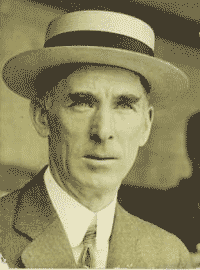
Connie Mack
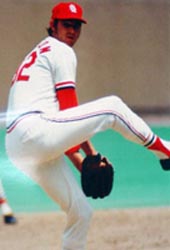 Steve Carlton
Steve Carlton
|
Some double-digit comebacks in baseball history.
- June 18, 1911 @Detroit: the Tigers trailed the Chicago White Sox at Detroit 13-1 going into the bottom of the fourth. Detroit won 16-15.
- June 15, 1925 @Philadelphia: the Cleveland Indians led the A's 14-2 in the bottom of the sixth. Connie Mack's club scored 13 in the 8th to win 17-15.
- June 15, 1952 @New York: After four innings of the first game of a doubleheader, the Cardinals trailed the Giants 11-0. St. Louis won 14-12.
- June 9, 1968 @Cincinnati: Since President Johnson declared this Sunday a day of mourning in memory of Robert Kennedy who had been assassinated on June 5, the Reds' players voted by a slim margin to boycott the doubleheader with the Cardinals. When GM Bob Howsam and manager Davie Bristol called for nine volunteers to play, Pete Rose, Tommy Helms, and Jim Maloney responded, soon to be followed by the rest of the team. In the first game, the Reds scored 8 runs in the first five innings off young LHP Steve Carlton while shutting down the Redbirds. However, St. Louis scored 10 in the sixth to win 10-8. In the second game, the Cards jumped out 6-0 in the top of the fourth only to have the Reds rally for a 7-6 victory. Carlton, pitching in relief, lost the nightcap.
- April 17, 1976 @Chicago: The Philadelphia Phillies overcame a 12-1 deficit after three innings to defeat the Cubs 18-16 in ten innings.
- July 18, 1994 @Houston: Trailing 11-0 after three innings, the Astros beat the Cardinals 15-12.
- August 5, 2001 @Cleveland: The Seattle Mariners prevailed 14-2 going into the bottom of the seventh only to lose to the Indians 15-14 in 11 innings. Cleveland scored 3 in the 7th, 4 in the 8th, and 5 in the 9th.
|

Charles Finley
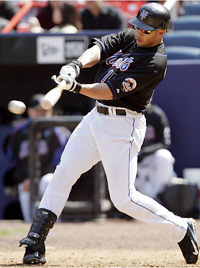
Carlos Beltran
|
Lots of outrage this spring concerning the bonuses paid to AIG employees who led the company into financial disaster. Here are some cases of bonuses that baseball players did or did not make.
- Supposedly Joe DiMaggio lost a $10,000 bonus when his famous 1941 batting streak ended at 56 games. Who would have offered him a bonus if he reached 57? Why, Heinz, of course.
- In 1972, Oakland A's owner Charles Finley offered his players $300 if they would grow mustaches as part of a Father's Day promotion. All 25 did and thus created a team trademark. P Rollie Fingers even had a clause written into his contract for the following season that paid him $300 for his handlebars and $100 for wax.
- The Toronto Blue Jays were required to pick up the option on reliever Dennis Lamp's contract for $600,000 if he appeared in a certain number of games in 1987. Getting close as the season entered September, Lamp wasn't even called on to warm up in 23 straight games. The club claimed he had been ineffective. He filed a grievance citing his 2.70 second-half ERA. However, he lost the appeal.
- Carlos Beltran's seven-year contract with the Mets in 2005 included a requirement that the team lease a machine that throws numbered colored balls to help the batter pick up the speed of pitches as well as an operator for the device. Despite the mechanical help, Beltran hit only .266 his first year with New York.
Reference: "Baring Their Clause," Sports Illustrated
|
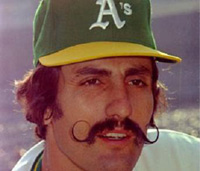
Rollie Fingers
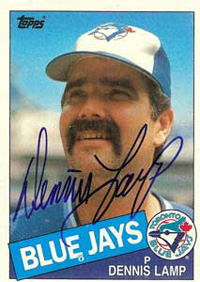
Dennis Lamp
|
|
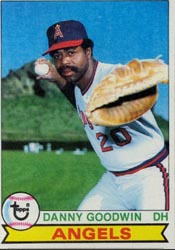
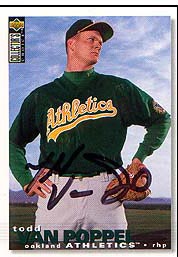
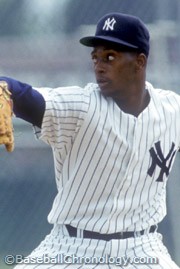
Brien Taylor
|
It's easy to come up with a long list of Draft Duds in any sport. Here's a sampling of high baseball picks who tanked.
- The granddaddy of all lousy picks came in 1966 in just the second amateur draft that MLB conducted. The Mets, having finished with the worst record in baseball every year of their four year existence, selected high school C Steve Chilcott. Beset by injuries in his seven seasons of pro ball, Chilcott never reached the majors. The second pick of the 1966 draft was held by the Kansas City A's, who used it to take Reggie Jackson, the Candy Bar Man.
- Not one but two teams whiffed on another C, Danny Goodwin. The Chicago White Sox chose Goodwin first in 1971 but he decided to go to college at Southern University in his hometown of Baton Rouge. Four years later, Goodwin was again drafted #1, this time by the California Angels, who signed him for $125,000. Danny spent parts of seven seasons in the majors but never as a C. He played 1B or DHed. Never appearing in more than 59 games in any season, he "amassed" 13 HRs and 81 RBI. Actually, the entire 1975 first round was weak. Of the 24 picks, only three can be considered even moderate successes: Rick Cerone (Indians), Clint Hurdle (Royals), and Dale Berra (Pirates).
- In 1983, the Minnesota Twins chose RHP Tim Belcher with the first pick. Belcher had a solid major league career (146 wins). But the Twins and 17 other clubs passed up a RHP from the University of Texas named Roger Clemens.
- It isn't always the first pick that proves to be an embarrassment. The Cubs used the eighth pick in 1989 on OF Earl Cunningham. Big Earl spent eight seasons in Class A. His career BA was .224. The epitome of his futility came in 1992 when the Cubs promoted Earl to Winston-Salem in the Carolina League, a better Class A league. In 25 games, Cunningham walked three times and struck out 54 times while hitting .108. To take Earl in 1989, the Cubs ignored RHP Cal Eldred, 1B Mo Vaughn, and 2B Chuck Knoblauch.
- The top prospect for the 1989 draft was a Texas schoolboy P named Todd Van Poppel. The problem was that Todd wanted to attend Texas. The Braves picked first and, convinced they wouldn't be able to sign Van Poppel, went to their second choice, Chipper Jones. Twelve more clubs passed on Van Poppel until the Oakland A's took him. They had to spend $1.2 million to sign him. The A's also possessed the 26th, 34th, and 36th picks in the draft, using them to select three college Ps: Don Peters, David Zancanero, and Kirk Dressendorfer. Baseball America dubbed the quartet "The Four Aces." Their combined win total in MLB? 43 with Von Poppel supplying all but three of them in a 14-year career.
- There was a time when the Yankees wasted money on draft choices rather than free agents. In 1991, believe it or not, the Yankees "earned" the first pick as a result of compiling the worst record (67-95) in the AL. NY chose a high school LHP named Brien Taylor. Taylor's agent, a youngster named Scott Boren, rejected the Yanks' first offer of $350,000. Taylor finally signed for $1.55 million, a record at that time. His first two years in the minors, he made the Yankees look good, striking out more than one per inning. However, in December 1993 he landed on his left shoulder during a fight and tore his labrum. After rehabbing for a season, Taylor returned to the mound but never regained anything close to ML form. Included in the list of players the Yankees passed up in 1991 to take Yankees were Dmitri Young, Cliff Floyd, Shawn Green, and a slugging OF from their Bronx backyard, Manny Ramirez.
|
|
|
